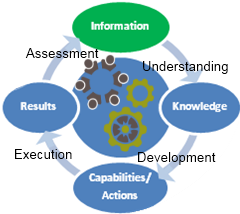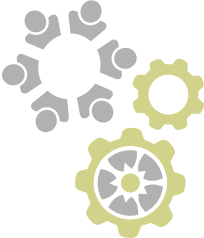How things are done, processes, the building blocks of business are changing. You build successful organizations by building processes(sets of activities and decisions to achieve specific goals) but now it's even more important that you optimize the people, technology and analytics in these processes if you want a successful result (and more literally, if you want to survive). This is increasingly complicated by the fact that many processes, especially those involving the product or service delivery cycle, involve and flow through multiple organizations. The technology enables it and makes it far easier than ever but the people issues and choices are more crucial and complex than ever before. Although some industries have barely been touched as the impact is uneven across industries, it is spreading rapidly and the need to effectively manage these processes across organizations will soon be pervasive.
Many of the causes are self-evident and include the following:
- Number 1 is the proliferation and access to information of all kinds anytime anywhere.
- The shift from a fixed set of tasks and concrete decisions that were characteristic of processes in the past to a changing number of activities or mini-projects to achieve specific outcomes.
- The increased need, due to the above points, for knowledge (and continually improving knowledge) to be "applied" to a process.
- Increasingly greater market segmentation in most industries creating the need for more flexibility and customization
- Real advantages and enabling technologies enabling direct customer involvement in processes
- Increasing participation in supply chain and cross-industry platforms due to cost and other competitive necessities (most commonly called Business Process Networks)
- Globalization of the work force, global centers of excellence for key skills as well as changing worker attitudes and skill sets
- Increasing ability to "mass-customize"
- Enabling technologies for outsourcing and development of areas of specialization for different competencies around the globe
- Scalability
- Enabling technologies allowing even very small micro-businesses the ability to disrupt industries offering products and services cobbled together largely "over the cloud".
Moreover in the future, other changes will be seen.  Processes will be designed to take advantage of and support data analytics. Twenty years ago, we went through a huge change where products were designed for manufacturing or designed for assembly. Now, we need a similar revolution where processes are designed for analytics. Without this, you'll see more data but not much more knowledge. As smart mobile devices get more interchangeable for work tasks (this is actually improving exponentially with browser accessed cloud-based systems), new capabilities, structures and outcomes will occur.
Processes will be designed to take advantage of and support data analytics. Twenty years ago, we went through a huge change where products were designed for manufacturing or designed for assembly. Now, we need a similar revolution where processes are designed for analytics. Without this, you'll see more data but not much more knowledge. As smart mobile devices get more interchangeable for work tasks (this is actually improving exponentially with browser accessed cloud-based systems), new capabilities, structures and outcomes will occur.
Because the benefits of these changes, organizations can reduce costs and provide new and more powerful ways to meet customer needs. The competitive marketplace will drive these changes rapidly although there will be great differences across industries.
Organizations will increasingly need to transform their people, their work flows(processes) and their thinking to succeed.


















